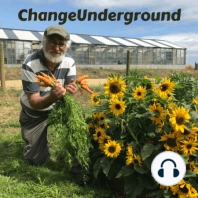7 min listen
72 #worldorganicnews 2017 07 10
ratings:
Length:
6 minutes
Released:
Jul 9, 2017
Format:
Podcast episode
Description
Links CONTACT: podcast@worldorganicnews.com Climate change to disproportionately affect the poor — Iowa Environmental Focus http://wp.me/p5Cqpo-fFD Constructing an Alley Cropping Food Forest — Permie Flix http://wp.me/p5Cqpo-fH0 SALT in the Philippines http://www.fao.org/ag/agp/agpc/doc/publicat/gutt-shel/x5556e0y.htm Atmospheric Water Harvesting, Peru — Permie Flix http://wp.me/p5Cqpo-fF1 **** This is the World Organic News for the week ending 10th of July 2017. Jon Moore reporting! We begin this week with a post from Iowa Environmental Focus: Climate change to disproportionately affect the poor. I’m pretty sure we can all agree that the lower down the socioeconomic scale one resides the worse off one is in the material life and to continue this trend, Climate Change looks likely to hit the poorest, the hardest. Quote: Researchers figured the economic costs of climate-related impacts like rising sea levels, more extreme weather and higher temperatures. They ran many simulations which calculated the potential costs and benefits of each phenomenon for a variety of industries and business sectors. They figured that on average, the U.S. will lose roughly 0.7 percent gross domestic product (GDP) per 1 degree Fahrenheit increase in global temperatures. This economic burden, however, will not be shared equally by all parts of the country. The poorest counties in the U.S., which are mostly in the South and southern Midwest, are likely to suffer the most intense economic downturn, with some counties expected to lose more than 20 percent of their gross county product. End Quote. And the article goes on to suggest that not only will these areas suffer, wealth, such as it is in poorer counties will redistribute to wealthier areas in the North West and New England. And these figures are just for the US. I would guess low lying areas of Bangladesh will not be making increases in GDP when they flood. These changes have been predicted and mapped for decades so it’s surprising such things still need to be explained. Any major changes, economic, climatic and most social changes do not bode well for the bottom half of society and haven’t for much of history. This why the post second world war economic situation, coming out of the great Depression was set up to ensure a greater level of equality across the classes, at least in the dominant parts of each culture. The irony is, in the US and here in Australia, the poorest have been sold a pup when they are told global warming is a political scam by the left. As the figures show from the post quoted, it is the very people who will suffer the most who have been sold the greatest lie. On an up note a post Constructing an Alley Cropping Food Forest from Permie Flix provides a carbon neutral or even carbon positive solution for agriculture. And it is the agricultural sector outside the developed world which is among the poorest in the world. Alley cropping is a system of perennial plantings in an alley pattern which anchors soil, provides a permanent return while still allowing for the possibility of cash crops. I first came across this in a Permaculture manual and an organisation called SALT, sloping agricultural land technology. The link in the show notes points you to an FAO program in the Philippines. The philosophy behind alley cropping as applied in the Philippines example is to anchor the soil. This is critical and think I’ve made this point before, everything starts with the soil. It is possible to choose perennials which can be cut and dropped to improved soil structure, nitrogen availability, animal feed and food. The video post mentioned above works along these lines to build a permaculture food forest. The system is extremely flexible. I’ve seen it applied using saltbush in western Australia to provide drought forage for sheep while wheat is grown in the alleys. The wheat stubble or the whole plant in a drought year become available feed for the sheep. The sheep droppings fuel the soi
Released:
Jul 9, 2017
Format:
Podcast episode
Titles in the series (100)
23 #worldorganicnews 2016 07 04: A new documentary "What's With Wheat?", Industria… by ChangeUnderground
